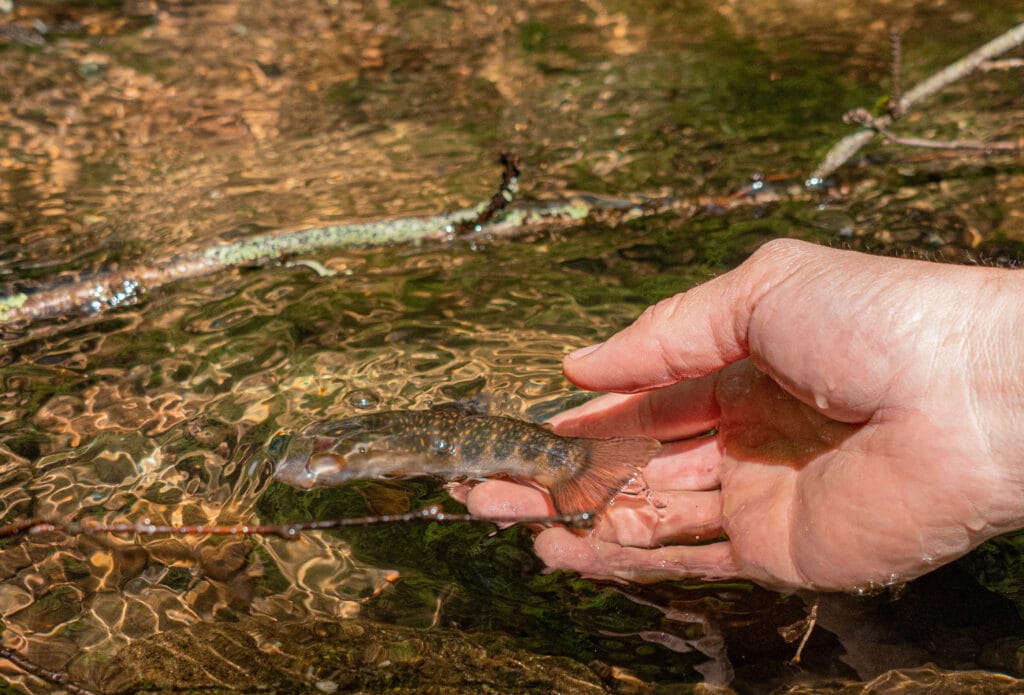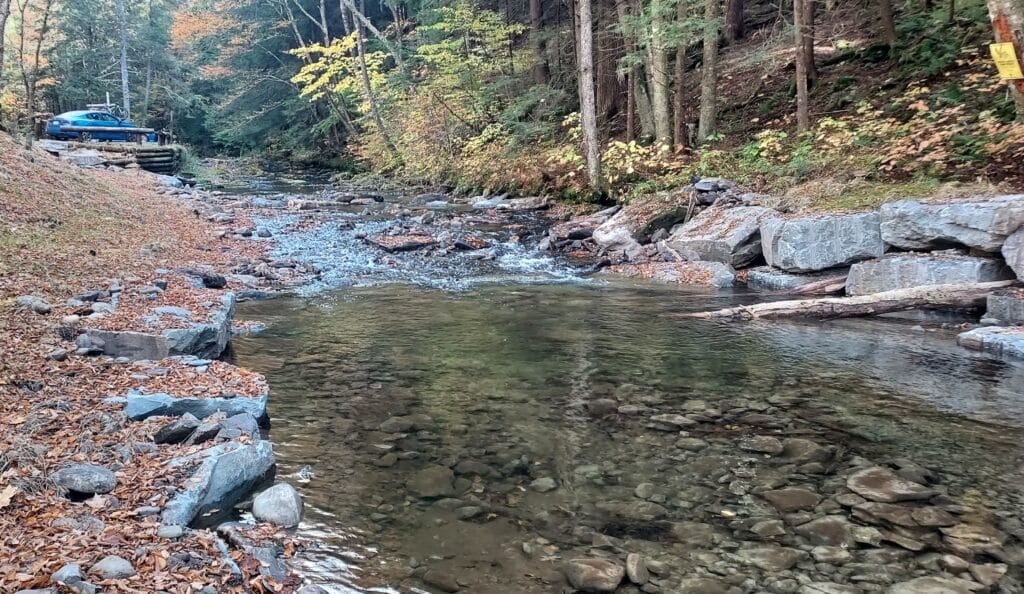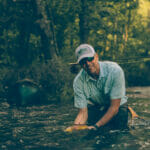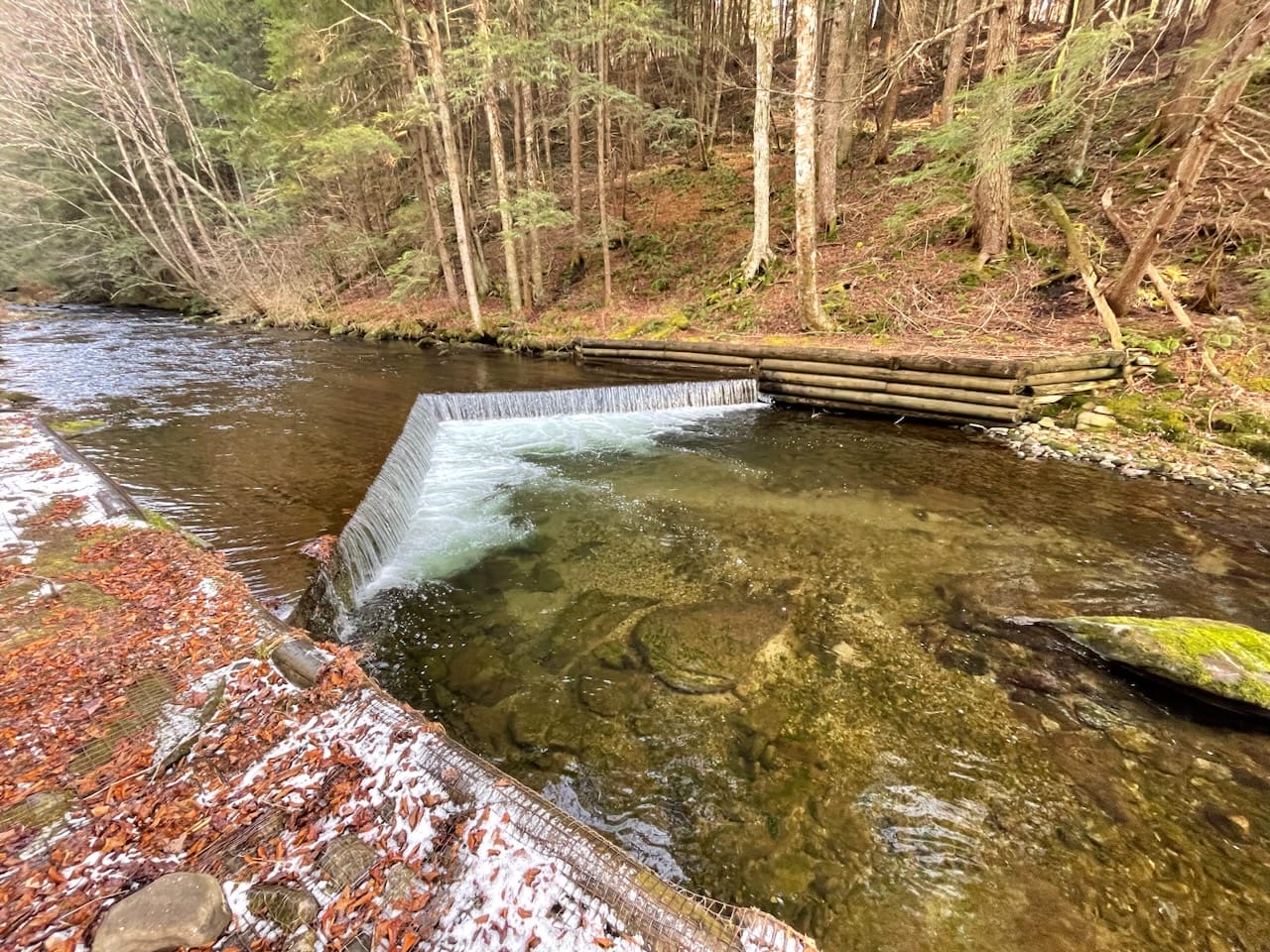Separated by several years, two events are working together to make a great trout stream in the Catskills even better.
First came a decision in late 2020 by New York state fisheries officials to halt stocking on the Mongaup Creek, a tributary to the Willowemoc Creek in the upper Delaware River watershed. The move came after the stream was formally designated as wild trout water in the state’s new trout stream management plan.
Then, early this fall, TU removed a barrier to fish passage on the creek, further improving the health of a stream whose wild brook trout had already responded to conditions in the now wild-only fishery.
“This is an entirely wild trout fishery,” said Jesse Vadala, TU’s engagement coordinator in New York. “And an advantage of taking that dam out is that it opened not only six miles of upstream habitat in the Mongaup Creek but many more miles of tributaries.

“Together we have 15 miles of reconnection happening. Getting a half mile is good. Fifteen miles is monumental.”
The Mongaup project represents the most recent in a string of restoration projects in the Upper Delaware River watershed, a TU Priority Water, thanks to a variety of funding sources. That momentum will continue with a host of other projects on tap made possible by a recently announced grant from the National Fish and Wildlife Foundation.
The dam, located not far upstream from where the Mongaup Creek enters the Willowemoc, was what is deemed a “pool digger” structure—a V-shaped dam that scours the stream below.
Upstream at a different site, crews installed a J-hook structure to stabilize an eroding bank, installed boulders to improve habitat diversity within the reach and installed four rock/log grade-control structures at the former dam site. Downstream, where remnants of another pool digger create a hazard for wading anglers, stream improvements in 2025 will include parking lot repair as well as instream improvements.

In addition to funding from the NFWF grant, two other supporters provided critical support.
The New York Department of Environmental Conservation (DEC) provided financial assistance from money raised through its Habitat/Access Stamp program. The program invites outdoors enthusiasts in the Empire State to voluntarily purchase a $5 stamp to support the program.
“They can buy their license and buy the $5 stamp at checkout,” Vadala said. “I can tell you that 10 out of 10 anglers I talk to don’t know where their money goes. They just know the program sounds cool.”
Theodore Gordon Flyfishers (TGF) also made a generous donation of $10,000 to cover a shortfall in project funding in order for the work to be completed in 2024.
“This stream is a prime example of why stocking is not needed, particularly if the habitat exists or can be improved to create a healthier ecosystem,” wrote TGF Conservation Chair Julan Antebi in the group’s newsletter. “These are the kinds of projects that TGF actively supports and promotes.”
Tracy Brown, who leads TU’s restoration work in New York, agreed that focusing on wild trout streams is a focus for her team.
“Our focus in New York is to work in watersheds that TU and the New York DEC have identified for reducing stocking in favor of wild trout,” Brown said. “This is a great example of doing just that through habitat improvements.”
Vadala said he has fished Mongaup Creek and is excited to watch the fishery continue to improve.
In August, NFWF announced a slate of grants supported by the Bipartisan Infrastructure Law for projects in the Delaware River waters, including awards to TU and partners that will facilitate more habitat improvements.
In addition to the Mongaup pool digger dam project, the $779,300 grant will support implementation of additional nature-based solutions for brook trout passage and habitat restoration in the tributaries to East Branch Delaware and Willowemoc Creek. Combined with matching funds, that grant will total over $1.5 million. All these factors combine to greatly improve the fishing on Mangaup and other focal creeks.



